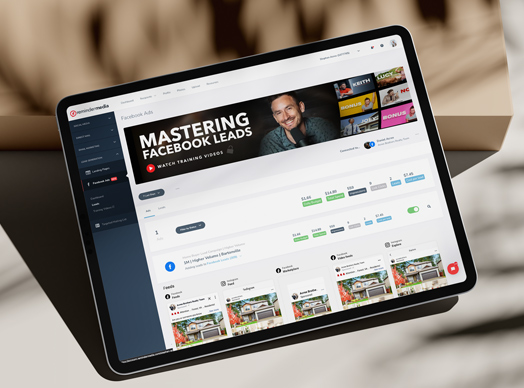Ep. 260: The 3 Hidden Secrets We Found in 2021 Sales Stats
What 2021 Sales Statistics Say about
Lead Generation, Follow-Up, and Referrals
Who should listen: Sales professionals interested in their profession’s most important statistics, how they compare, and advice for improving.
Key idea: Three simple actions can improve your results . . . all you need to do is take them.
Action item: Call the people in your database, and ask for a referral or an introduction to anyone who may be looking to buy or sell a home.
In this Silver Dollar episode, we provide you with a lot of sales statistics. Some are impressive, some are surprising, and some are downright unbelievable. But numbers without recommendations about what they mean and what actions they suggest are just . . . well, numbers.
The 15 statistics we discuss—while interesting in and of themselves—point to three actions that entrepreneurs and salespeople don’t do often enough So while they’re not actual secrets, you’d think they were.
If you want to meet your sales goals, then the numbers suggest you should:
- Prospect for new opportunities every day.
- Follow up a lot.
- Intentionally ask for referrals.
You’ve got to prospect every day
It’s no surprise that the more opportunities you can create through prospecting, the more leads you’ll collect and the better your chances are for converting enough of those leads to hit your sales goals for the quarter.
Want to know how much better?
According to a study conducted by HubSpot, of the companies surveyed that did not meet their sales goals:
- 72% had 50 or fewer new opportunities per month
- 15% had between 51-100 new opportunities per month
- 4% had between 101-200 new opportunities per month
Take a moment to consider the huge difference that only 50 extra opportunities a month can make—it’s the difference between 72% and 15% of companies not hitting their sales goals.
You’re NOT bothering them
When you call a friend, a parent, or a child on the phone, how often do you get them on the first attempt? Probably rarely, if ever—and these are people who know you! Why would anyone expect to reach someone who doesn’t know them on the first try?
Following up has never been a one-and-done deal, yet 44% of salespeople give up after only one call. This means even if you only make one additional call, you’re going to do better than almost half of all salespeople.
There are many reasons why salespeople don’t call their leads more often. Fear of rejection is a big one. Another is the belief that they are disturbing the person on the other end of the line with an interruption. We’ve got two thoughts on this:
- If you firmly believe that what you are selling will help your lead, then a phone call is not an interruption. It could be the best call they receive all week.
- Regardless of the type of call, every answered one is an interruption. All phone calls take the person away from what they were doing.
Let’s put the “I don’t want to bother them” excuse to rest. According to Invesp, when it comes to inbound leads, 75% of online buyers want to receive two to four calls, while 12% want as many calls as it takes to reach them.
There are many more statistics quoted in this episode about following up, but here’s the bottom line—if you’re not following up with leads, you’re losing business. Period.
You need to ask for the referral
Referrals are a bountiful resource of leads, but it always surprises us that so few salespeople ask for them. We think it’s because many salespeople believe that a job well done speaks for itself. To some extent, that’s true—clients are typically grateful when they are served well.
But that gratitude doesn’t automatically convert into referrals. You need to specifically ask for referrals.

How do we know?
While 91% of clients say they would refer their agent, only 11% of salespeople ask for a referral.
When you listen to the episode, you’ll hear many more numbers that will give you good reasons to ask for referrals—like numbers about referrals and retention rates, referrals and the likelihood to buy, and referrals and trust.
Final word
If you reflect on “the work”—what it is that professional salespeople do—the actual exchange of goods is a very small portion of their day. The great majority of a successful salesperson’s day is spent on the activities that generate sales—prospecting for leads, following up on leads, and requesting referrals for more leads. In all three instances, the statistics we found suggest that there is room for improvement in all of them.
The good news is that even an incremental improvement in any of these activities can put you ahead of many of your competitors. You just have to do it.
Block out time to prospect at least two hours every day.
Follow up on all your leads. Hire someone to do your follow-up if you need to.
Ask for referrals because that is the only way your clients will know and remember to give them.
Connect | Resources
FREE e-book: How 5 Top Producers Generate Referrals

















 Soundcloud
Soundcloud iHeart Radio
iHeart Radio Spotify
Spotify Spotify
Spotify


